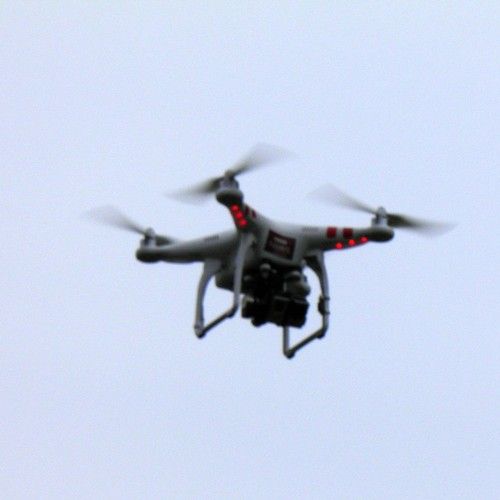Dr. Nils J. Nilsson spent almost a lifetime in the field of Artificial Intelligence (AI) before writing and publishing his book, The Quest for Artificial Intelligence (2009). I recently had the opportunity to speak with the former Stanford computer science professor, now retired at the age of 82, and reflect on the earlier accomplishments that have led to some of the current trends in AI, as well as the serious economic and security considerations that need to be made about AI as society moves ahead in the coming decades.
The Early AI that Powers Today’s Trends
One key contribution of early AI developments included rules-based expert systems, such as MYCIN, which was developed in the mid-1970s by Ted Shortliffe and colleagues at Stanford University. The information built into the diagnostic system was gleaned from medical diagnosticians, and the system would then ask questions based on that information. A person could then type in answers about a patient’s tests, symptoms, etc., and the program would then attempt to diagnose diseases and prescribe therapy.
“Bringing us more up to the future was the occurrence of huge databases (in the 1990s) — sometimes called big data — and the ability of computers to mine that data and find information and make inferences,” remarks Nils. This made possible the new work on face recognition, speech recognition, and language translation. “AI really had what might be called a take off at this time.” Both of these technologies also feed into the launch of IBM’s Watson Healthcare, which combines advanced rules-based systems with big data capabilities and promises to give healthcare providers access to powerful tools in a cloud-based data sharing hub.
Work in neural networks, another catalyst, went through two phases, an earlier phase in the 1950s and 1960s and a latter phase in the 1980s and 1990s. “The second phase (of neural networks) allowed…people to make changes in the connected strength in those networks and multiple layers, and this allowed neural networks that can steer and drive automobiles.” More primitive networks led to the cutting-edge work being done by today’s scientists in the self-driven automobile industry via companies like Tesla and Google.
Robotics was also being developed at Stanford in the 1950s and 1960s. A robot could look at its environment and determine the position of objects, could be given tasks and then make a plan of action to achieve the goal. A built-in monitoring system allowed it to evaluate results and it could re-orient itself and get back on track. These early robots used a digital equipment computer that is not nearly as powerful as the technology that we have on a present-day wristwatch, let alone an an autonomous drone.
All of these early technologies led to the trends in industry that are moving and shaking the global economy. An interesting difference worth noting, between the way that old and new technologies were primarily developed, has to do with the driving context. There is a well-known distinction between ‘demand-pull’ technology (using AI to solve existing problems) and ‘push’ technology orientations (AI that is developed from the top down, without necessarily meeting specific user needs).
In the earlier days of AI research, scientists and engineers leaned toward the latter ‘push’ method, as opposed to the ‘demand-pull’ strategy that is more prevalent today (though certainly both exist). Early AI scientists “really wanted to see how far they could leverage the technology”, remarks Nilsson, as they were fascinated by the basic techniques, but not yet sure about purpose.
AI Threats on the Horizon
Global security is an increasing threat made evident by developing technologies. People are and will be monitored more often (at airports, street corners, etc.). There’s also the issue of autonomous weapons, in particular planes or drones that are not guided as they are now. The technology is already available for allowing such machines to make decisions autonomously. This is already a pressing a public issue to which the United States, “as defenders of democracy”, and other nations should pay careful attention to, remarks Nilsson.
The theoretical concerns of AI’s threat to the existence of the human species, so readily covered in the media, are legitimate; however, Nils does not believe they are the only concern for the very near future. Instead, he suggests that AI poses other kinds of relevant threats about which we should also be thinking, such as those risks to the existing economic system.
The issue of employment as a result of increasing automation is one point for real consideration. Economists have made the argument that automation has occurred in the past and that such innovations have not prevented new startups; however, with the seeming inevitable development of human-level cognitive AI, there are many more jobs (certain types of journalism, for example) that machines can also perform more quickly.
“Now, should we regard that as a threat, or should we regard that as ‘well, lots of people have jobs that they don’t like, why should we regard eliminating the need for people to work at those jobs as a threat?”, says Nils. While increased automation will inevitably result in a decreased need for human labor, the question as to what humans will do with more leisure time remains. They could spend time doing more creative things, but this is a serious consideration for humankind.
Nilsson points out that nations will also need to reorient the economy. “The production of goods and services will certainly increase, but will be done by robots and automation; I think the big problem for us is to decide, ‘okay, how do we actually distribute these goods and services to people who aren’t earning a salary?’”
The Need for Real Solutions
What are the potential solutions? On autonomous weapons, Nils believes that there certainly needs to be international collaboration. The United Nations (UN), “which sometimes is not as effective as it should be”, needs to be heavily involved. Nilsson states the need for forming other alliances with NATO, the Chinese, and other rising governments; he’s not sure what to do about the Middle East, which is already a “hot spot.”
Regardless, Nilsson emphasizes that the United States needs to be able to lead the way and set better, well thought-out examples in how we use such technology. “Not only we, as a ‘defender of democracy’ should pay careful attention to and worry about (these threats), but other nations need to do so also.”
On the issue of employment, Nils points to the need to ask some tough questions i.e. “are we going to have a policy of income distribution or reverse income taxes?” There is the problem of people’s ability to purchase, but also the very real consideration as to what people will do with their time, a paradox shift. “In the past, people didn’t have that worry because they had to work…we can’t very well go back to the old breads and circus thing of the Romans,” he jests.
Nilsson believes that this will require the usual avenues of politics and think tanks, though one would assume a much more active and integrated citizenry as well. “One important part is the citizenry has to be more well-informed about these threats than it is at the moment.” Coming up with real solutions requires a real collaborative, multi-pronged effort, one that is all too often easier said than done.








